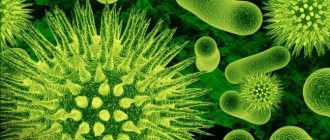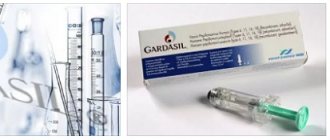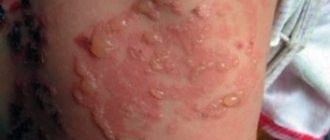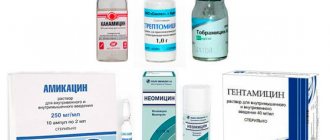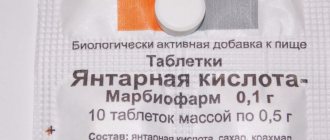Chickenpox symptoms
A rash all over the body is the main symptom of chickenpox, and this rash also appears on the mucous membranes. Chickenpox in the mouth is an enanthema. The child's temperature rises, general weakness appears, muscles and head ache. Usually this condition lasts 2-5 days. With chickenpox there may not be a fever - it all starts with a rash.
The incubation period for chickenpox is 10-21 days from the moment of infection. The disease usually lasts 5-10 days, although there are cases of the disease lasting 3 weeks.
With a mild form of chickenpox, the child may not be bothered by anything: he will be active and in a good mood, and only a small rash on the body will indicate that the baby is sick.
Chickenpox by day
Photos from open sources
How to treat chickenpox in children? (diagnosis, symptoms and treatment)
Red spots appeared on the baby's face. What is this? Allergy? Mosquito bites? What if the body temperature rises?
With questions about a disease such as chickenpox, we go to an appointment with the pediatrician at the Expert Tula Clinic, Valeria Aleksandrovna Golovko.
— Valeria Aleksandrovna, what is chickenpox and how does it manifest itself in children?
This is an infectious pathology, also known colloquially as “chickenpox”.
The symptoms of chickenpox are varied. This is the appearance on the skin and mucous membranes of a specific rash in the form of spots, nodules and blisters. Elements of the rash are found on the face, scalp, body, arms and legs. They appear one after another, i.e. First a spot or papule appears, and then a vesicle. Later, crusts form in place of the opened blisters, falling off after 1-2 weeks. At the same time, the palms and soles remain clean.
Rashes on the mucous membranes are accompanied by pain, itching and the formation of erosions and even ulcers.
Fever, malaise, and decreased appetite and sleep are also noted.
— What causes chickenpox?
Varicella Zoster virus. It belongs to the herpes viruses.
What is herpes? Candidate of Medical Sciences, dermatovenereologist at Clinic Expert Tula says:
Sheinkman Vladislav Leonidovich
— How is chickenpox transmitted?
The disease can be contracted through airborne droplets from a person with chickenpox and herpes zoster (shingles). The virus spreads when a person talks, coughs or sneezes.
— Is chickenpox a childhood disease or can adults get it too?
Children are predominantly affected, but cases of infection in adults are also common.
— Is it possible to get chickenpox again or does it only happen once?
Different situations are possible. Suppose a person was ill in childhood, but for some reason the immune system was unable to “cope” with the virus completely. In this case, the virus can remain in the so-called nerve ganglia in an inactive state. Under certain conditions, it is able to reactivate, often manifesting as shingles. This could be, for example, during exacerbations of chronic pathologies, severe stress, hypothermia, or after suffering some kind of infectious disease.
The situation described is not a re-infection. However, this is also possible in principle. This risk exists in the elderly; persons receiving chemotherapy or hormone therapy; after organ transplant operations; infected with human immunodeficiency virus. In other words, with a significant weakening of the immune system.
Is it true that unvaccinated children are the healthiest? Ulyana Vladimirovna Chemova, pediatrician, allergist-immunologist at Clinic Expert Smolensk, tells the story.
It is currently believed that the chickenpox virus does not mutate, but it cannot be ruled out that it will in the future. In this case, we can assume the occurrence of repeated infections with classic manifestations of this disease.
From personal experience: in 12 years of working in the pediatric department, I have not observed repeated cases in the same child.
— Why is it better to have chickenpox in childhood?
Because in this period of life it is much easier to bear. In people over 20 years of age, the infection is severe; after the illness, there is a high risk of complications that are dangerous not only to health, but also to life.
An example from practice: I witnessed a case of this disease in an adult woman who was sick at the same time as her child. She had a severe infection: with sharp rises in body temperature up to 40°C, severe headache, sensitivity to light and sound, hallucinations, profuse large painful rash, and swollen lymph nodes.
— Is it worth deliberately infecting a child with chickenpox?
No, you shouldn't do this. Chicken pox greatly undermines a child's immunity. Like any infection, it causes serious intoxication. The nervous system is subjected to significant stress, the cardiovascular system and musculoskeletal system suffer, and the respiratory system is affected.
How to strengthen a child's immunity? Read more
After chickenpox, a child may begin to suffer from respiratory infections more often than usual. Therefore, immediately after recovery it would be wrong to go to kindergarten or school.
How long is a person with chickenpox contagious?
It becomes contagious from the end of the so-called incubation period, that is, 2-3 days before the appearance of the elements of the rash, and remains so for 4-5 days after the appearance of the last bubbles.
— Is chickenpox a harmless disease or can it have negative consequences?
How dangerous is chickenpox for children and adults? Sometimes it leads to the development of complications. Among them, for example, are the addition of a bacterial infection to the skin in areas affected by the virus; inflammatory processes of the oral cavity, larynx, trachea, lungs, meninges and brain tissue, joints, myocardium, kidneys; swollen lymph nodes; sepsis.
If a pregnant woman becomes infected a few days before giving birth, the probability of illness in her child increases to 17%, and 30% of the sick newborns, alas, die.
— Adults who had chickenpox in childhood remember that the main problem with this disease is severe itching. How can parents help their baby relieve itching? What is the best way to lubricate a chicken pox rash?
Antihistamines and some products for external use, including those containing antiviral agents, will help relieve skin itching.
The “green stuff”, known to many, does not relieve itching, but to some extent dries and disinfects the wound, and allows you to control the appearance of new rashes.
How to properly smear a rash with chickenpox? Every morning, new blisters on the body are smeared with a solution of brilliant green. Observe the intensity of their occurrence. One day the bubbles will stop forming. From this point on, after 5 days, the infectious agent will become inactive.
— How to avoid complications with chickenpox?
To do this, you must contact your doctor in a timely manner and follow all his recommendations. During treatment, it is necessary to carefully monitor the cleanliness of the baby’s hands and the length of the baby’s nails in order to avoid contamination of the wounds on his skin.
— Tell us about the “dos” and “don’ts” for chickenpox. For example, is it possible to bathe a child with chickenpox?
“It is possible”: take water procedures even in the first days of the appearance of elements of the rash. Their absence can contribute to the transformation of the rash into abscesses due to contamination of the skin and the accumulation of bacteria on it. A short warm shower (but not a hot bath!) helps to maintain sanitary standards. After showering the baby, you should not wipe it, but gently pat the skin dry with a soft towel.
“Do not”: treat skin rashes with a 5% alcohol solution of iodine - it is irritating; violate home routine from the moment the first elements of the rash appear and for 5 days after the formation of the last blisters; use aspirin for antipyretic purposes - this increases the risk of developing Reye's syndrome (rapidly progressive cerebral edema and the development of liver complications in the form of liver failure, mortality reaches 20-30%); tear off/comb the crusts.
— Valeria Aleksandrovna, what should be the diet for a child with chickenpox?
It is recommended to drink a lot during illness. The diet should be dominated by fermented milk products, vegetables, and fruits. Fried and fatty foods should be avoided. They can contribute to increased skin itching.
— How many days does it take for chickenpox to go away?
During this disease, periods such as incubation, prodromal and the period of appearance of rash and crust formation are distinguished.
The incubation period is the period of time from the moment a microbial agent enters the body until the manifestation of the disease. Duration - 11-21 days (average 14 days).
The prodrome occurs 1-2 days before the first elements of the rash appear. In childhood, the manifestations of this period are not pronounced; in adults they are more severe (headache, pain in the lumbar and sacral area, increased body temperature are noted). Then comes a period with rashes (for both 2-5 days and 7-9 days).
In the uncomplicated classical course, recovery occurs within 10 days from the moment the first elements of the rash appear. The period of infectivity ends 5 days after the appearance of the last rash.
— Is there a vaccine against chickenpox?
Yes. Several types of chickenpox vaccine have been registered and approved for use in our country. After vaccination, lasting immunity is formed.
You might be interested in:
What will help with a cough: badger fat or mustard in socks? We treat children correctly
What to do if your child has a stomach ache?
How to save a child from hay fever?
For reference:
Golovko Valeria Alexandrovna
Graduate of the Faculty of Medicine of Tula State University in 2004.
In 2005, she completed an internship in the specialty “Pediatrics”
Currently working as a pediatrician at Clinic Expert Tula LLC. Receives at the address: st. Boldina, 74
How is chickenpox transmitted?
Most often, children from 3 to 7 years old suffer from chickenpox. In children under one year of age, adolescents and adults, chickenpox is a rare occurrence. The mode of transmission of chickenpox is airborne. The causative agent of the disease is herpes virus type 3 (varicella-zoster). This virus begins to rapidly multiply in the blood and lymph of the sick person, and when it ends up in the upper layers of the skin, the same rash of chickenpox appears.
Read also Epstein-Barr Virus: what it is and how to treat What is Epstein-Barr Virus and what drugs are prescribed for its treatment.
How to treat scars after chickenpox?
After recovery, scars and pockmarks will not remain, but only if you followed all the doctor’s recommendations and treated the wounds with an antiseptic. If traces of chickenpox are still present, you can get rid of them in different ways. It can be:
- salon treatments;
- creams, gels or ointments;
- ethnoscience.
The choice of a particular procedure depends on the size of the scars or pockmarks, their number, the desired speed of effect and, of course, the presence of contraindications.
Let's consider each method of getting rid of scars after chickenpox in more detail.
Salon treatments
As a rule, this method is chosen in the case of treating deep mature pockmarks in an adult. For children, many procedures are more likely to harm than correct the situation, so they usually try not to touch very noticeable scars on a child.
Salon treatments for scars include:
- Peeling . Treatment of leather with chemical acids. The rehabilitation period after the procedure lasts from a week to a month. During this time, you need to carefully monitor your skin, avoid sunlight, dust, and minor damage.
- Grinding . Laser removal of damaged top layer of skin. Does not require preliminary preparation; it acts in a targeted manner without affecting healthy tissue. Small scars can be removed in one session, but larger ones will require several procedures. Laser resurfacing is contraindicated for pregnant, breastfeeding women and those who had peeling less than 2 weeks before the procedure.
- Microdermabrasion . Removal of the top layer of skin with microcrystals. It will help with small scars; large scars and deep pockmarks will be made less noticeable. Aluminum dioxide particles under pressure penetrate into the deep layers of the skin, and the vacuum pulls them out along with dead cells. This process is traumatic and requires long-term restoration of the skin.
- Wrap . The most harmless of the listed methods: smoothing the skin, evening out the overall tone and smoothing out traces of chickenpox. A medicinal substance is applied to previously cleansed skin, wrapped in film and covered with a thermal blanket. After the session, the product does not need to be washed off.
- Physiotherapy: electrophoresis, phonophoresis . Transfer of useful substances deep into the damaged area of the epidermis using ultrasound (with phonophoresis) or electricity (with electrophoresis). Can be used as a prophylaxis against scars immediately after an exacerbation of chickenpox.
- Injections . Used when there are large depressions on the face. Hyaluronic acid or various cocktails are injected under the skin. They fill the pockmark, making it convex - the surface of the skin is leveled. Over time, the drug is absorbed and pockmarks appear again: the injection should be repeated every six months to a year. However, the injections will not have any effect if you treat old scars.
Before starting any cosmetic procedure, be sure to consult your doctor about contraindications and its necessity in your individual case.
Find out which method of correcting scars and stretch marks is optimal for you!
doctor Svetlana Viktorovna Ogorodnikova.
doctor
Creams, gels, ointments
Applications of cream, gel or ointment for scars do not create such discomfort as any of the salon procedures, and they can be used by children.
It is worth remembering that anti-scar cosmetics should be applied only to an existing scar, but not to an open wound. To remove the consequences of chickenpox, he usually recommends the following remedies:
- Medgel;
- Bepanten;
- Sledotsid;
- Kelofibrase;
- Keratan;
- Zinc ointment;
- Fermenkol;
- Contractubex;
- Mederma;
- Methyluracil;
- Dermalix;
- Zeraderm Ultra.
Some of them give results faster, while others are used for six months or more before the pockmark disappears. They are chosen based on the age of the scar, price, personal contraindications and recommendations of the attending physician.
ethnoscience
For lovers of everything natural, “grandmother’s” recipes are suitable, which anyone can prepare at home:
- Lubricate your face with a slice of cucumber;
- Apply simmered onion over low heat to the pock marks (cook for about 15 minutes);
- For 1 teaspoon of cocoa butter, dilute 3 drops of sandalwood and tea tree essential oil. Rub into scars or pockmarks using massage movements.
- Pour boiling water over 1 tablespoon of dried marshmallow and leave for 8 hours. Wipe the skin with the solution up to 5 times a day.
- Finely ground oatmeal. Pour boiling water over and cool. Apply the paste for 30 minutes to adults and children.
The advantages of traditional medicine are that most recipes, with rare exceptions, are suitable for both adults and children. However, the visible effect will not appear immediately - you will have to be patient for six months, a year.
Complications of chickenpox
The main and dangerous complications of chickenpox are myocarditis and encephalitis. Such complications are typical for adults and those children who have weakened immune systems.
In addition to ordinary chickenpox, there are bullous, gangrenous and hemorrhagic forms. These are severe types of disease with complications. If the wounds become infected with a bacterial infection, another complication may develop - pyoderma. This complication often occurs in children.
The rash with ordinary chickenpox leaves no traces, but with such suppuration, scars are possible.
conclusions
The lack of specific immunity makes almost every person vulnerable to diseases caused by pathogens of the enterovirus group. You should not treat “resort infections” irresponsibly; they often lead to serious complications. Most patients infected with the Coxsackie virus do not require hospitalization, have no negative consequences, and recover within 10-14 days. But children under 3 years of age are at high risk of developing dehydration, especially with vomiting and diarrhea. And if, nevertheless, a trip with a small child to the resort must take place, then the mother needs to take care of both additional hygiene products and the presence of a first aid kit with essential drugs in her luggage, so as not to run around local pharmacies in search of “antiviral drugs for coxsackie”. And, of course, when applying for insurance, you need to make sure that with this infection you can count on the help of a doctor, which is especially important if the disease suddenly causes complications.
Author of the article
Belyaev Dmitry Alexandrovich
General doctor
iExperience of using Viferon in complex therapy of serous meningitis of enteroviral etiology” / S. P. Kokoreva, A. M. Zemskov, N. P. Kuprina // Pediatrics. – 2002. – N 5. – P. 68-71. – ISSN 0031-403X
Loading...
Take other surveys
How to treat chickenpox
Chickenpox is treated symptomatically: with antipyretic drugs, antihistamines in the form of tablets or ointments for external use. In some cases, taking antiviral medications is recommended to help the body fight off the infection faster. Mouth ulcers heal well with sea buckthorn oil and Solcoseryl ointment. You can also rinse your mouth with weak solutions of furatsilin, soda, and potassium permanganate. Herbal decoctions diluted with alcohol tinctures of propolis or calendula are also suitable.
Solcoseryl dental adhesive paste
Meda Pharma, Switzerland
Wound healing, angioprotective, membrane stabilizing, regenerating, cytoprotective, antihypoxic drug, which is available in the form of an injection solution, gel and ointment for external use.
from 172
1.0 1 review
1210
- Like
- Write a review
Preparations for treating skin ulcers relieve inflammation, disinfect, accelerate healing, dry, and reduce itching.
What antiviral agents for Coxsackie virus are recommended for patients (at the INN level)
For any disease, comprehensive treatment under the supervision of a doctor is necessary. And enterovirus infection is no exception. As a rule, when characteristic signs of the disease are detected in a small patient, both antiviral antiviral and symptomatic treatment is prescribed. Among antiviral drugs, drugs containing interferon are used. Such drugs include Viferon Suppositories.
Suppositories containing human interferon do not give the virus a head start of several days until the body itself begins to fight the infection, but begins to act immediately, thereby reducing the recovery time. For symptomatic treatment, the following is used:
- Antipyretic syrups or suppositories containing paracetamol or ibuprofen.
- To avoid dehydration and alleviate the symptoms of intoxication, you should drink plenty of water (boiled or bottled), water with lemon;
- For diarrhea, it is advisable to take absorbent agents, such as activated carbon;
- To relieve pain in the mouth, you can use gels used for teething in babies.
- To speed up healing and prevent infection of mouth ulcers, antibacterial sprays are used;
- Although the rash usually does not cause itching in children (unlike chickenpox), if it bothers the baby, antihistamines can be used.
Rivanol
"Rivanol" is an antiseptic for external use in the form of a solution, effective in combating mainly coccal microorganisms (streptococci, staphylococci). It is these bacteria that usually cause complications with chickenpox (carbuncles, boils). "Rivanol" is used to spot treat ulcers 3-3 times a day. Contraindications: kidney problems and pregnancy.
Rivanol 0.1%
Dina+, UK
Rivanol is an antiseptic, has antimicrobial activity, fights coccal microorganisms, and is used in gynecology, urology, surgery, dermatology, and ophthalmology.
from 146
117
- Like
- Write a review
Tsindol
“Tsindol” for chickenpox perfectly relieves inflammation, disinfects wounds, and dries out burst blisters. The suspension should be used to treat the rash 3-5 times a day, depending on the severity of the condition. "Tsindol" is completely safe, so it is prescribed to children under one year of age and to pregnant women. The only contraindication is intolerance to zinc oxide.
Tsindol
Yaroslavl Pharmaceutical Factory, Russia
Diaper rash, diaper rash, prickly heat, dermatitis, ulcerative skin lesions, superficial wounds, eczema in the acute phase, herpes simplex, streptoderma, trophic ulcers, burns, bedsores.
from 36
556
- Like
- Write a review
Calamine
Calamine topical lotion is based on zinc and calamine oxide. The medicine for chickenpox relieves itching, irritation and inflammation well, and works as an antiseptic. “Calamine” is also as harmless as possible, but is not suitable for those who have individual sensitivity to zinc.
Calamine
The drug Calamine lotion is used in dermatological practice, in the treatment of diseases accompanied by itchy skin.
Therefore, the lotion is prescribed for the complex treatment of chickenpox, eczema, and psoriasis. Used for dermatitis, acne, herpes. Used in the treatment of skin rashes, herpes zoster, urticaria, rubella, etc. from 225
794
- Like
- Write a review
Furacilin
Wounds with chickenpox should be treated with a 0.02% solution of Furacilin 3-4 times a day (it is better to use a cotton pad). The product relieves inflammation, kills germs, and dries wounds well. "Furacilin" can also be used for ulcers on the mucous membranes.
Furacilin solution
Samaramedprom OJSC, Russia; PJSC "Biosintez", Russia; JSC Dalkhimfarm, Russia; Vips-Med, Russia
Externally: purulent wounds, bedsores, stage II – III burns, minor skin damage (including abrasions, scratches, cracks, cuts).
Locally: blepharitis, conjunctivitis, boil of the external auditory canal; osteomyelitis, empyema of the paranasal sinuses, pleura (washing the cavities); acute external and otitis media, tonsillitis, stomatitis, gingivitis. from 36
5.0 2 reviews
76
- Like
- Write a review
How to get rid of red spots
It is possible to take any measures to eliminate residual spots only after complete recovery, that is, after all the crusts have fallen off. If you do not treat with this product at the crust stage, then, most likely, by this time the paint will wash off without any targeted action.
How to remove Fukortsin from the skin (aggressive methods):
- Finely chop the soap (you can grate it) and add it to the container with hydrogen peroxide. Stir until a thick mass is formed and rub the resulting product into the “red” areas with a brush. Wash off with water;
- Take a 1% alcohol solution of salicylic acid and quickly wipe the stains with cotton pads. Since this method is extremely dangerous, it must also be washed off quickly with water;
- Take medicinal calendula, crushed laundry soap and add it to a container with hydrogen peroxide. Stir until a thick mass is formed and rub this product into the red spots, then rinse with cold water;
It is not advisable to use these methods for facial skin.
We erase red spots in less dangerous ways:
- Take vegetable oil, apply to a cotton pad and rub in the desired areas;
- We take regular soap and wash the tinted skin, after wetting it. Afterwards, wash off with water. You need to repeat this procedure more than 15 times a day, then you can get rid of stains in one day;
- Go to the sauna or bathhouse and take a good steam;
- We take makeup removers and easily remove stains using cotton pads. It is necessary to take breaks between procedures, 1-3 hours;
To support the skin, you need to prepare a vitamin decoction. We buy a few grams of vitamin C and add it to boiling water, stir for 10-15 minutes. Let it cool and rub the resulting product into the skin.
Chlorhexidine
"Chlorhexidine" (or its analogue "Miramistin") for chickenpox is applied to the vesicles 2-3 times a day. The product is also suitable for rinsing your mouth. "Chlorhexidine" is a broad-spectrum antiseptic with antimicrobial and antifungal effects.
Chlorhexidine
Update, Russia
Prevention of sexually transmitted infections (chlamydia, ureaplasmosis, trichomoniasis, gonorrhea, syphilis, genital herpes).
Disinfection of purulent wounds, infected burn surfaces; treatment of infections of the skin and mucous membranes in surgery, obstetrics and gynecology, urology (urethritis, urethroprostatitis), dentistry (gingivitis, stomatitis, aphthae, periodontitis, alveolitis). from 12
1060
- Like
- Write a review
Poksklin
Cooling mousse "Poksklin" for chickenpox has a completely natural base (panthenol, aloe vera, chamomile and lavender). The product cools and reduces scratching, so scars do not form. “Poksklin” relieves inflammation, has an antiseptic effect and accelerates the healing process of wounds.
Poksklin
PharmaVal AS, Netherlands
Poksklin cooling hydrogel was developed to relieve the symptoms of chickenpox over large areas of the body.
While spreading thick creams and ointments over the body can damage the blisters, the cooling hydrogel is very easy to apply and does not cause friction in sensitive areas when applied to the skin. PoxClean provides an immediate cooling effect, which significantly relieves itching. For this purpose, it can be used as many times as necessary. PoxClean contains the ingredient 2QR, a biologically active antibacterial complex. This component helps your child's natural skin immunity to block harmful bacteria. The antibacterial component in PoxClean is a polysaccharide obtained from the plant extract of Aloe Vera. It creates a barrier on the skin, thereby preventing the penetration and spread of bacteria on the surface of the skin. from 272
5.0 1 review
342
- Like
- Write a review
Fenistil
"Fenistil" is a safe antihistamine (antiallergic) drug of a new generation. To reduce the itching of chickenpox, antihistamines are used, this is especially true for children who cannot control themselves and scratch the wounds. It is not advisable to use Fenistil gel for chickenpox, since due to the treatment of large areas of the body it can be toxic to the body. But Fenistil drops for chickenpox are a good way to relieve itching. The number of drops is calculated based on the patient's weight.
Fenistil
GlaxoSmithKline, GSK, UK
The antiallergic effect of Fenistil is associated with competitive blockade of H1-histamine receptors.
Symptomatic treatment of allergic diseases such as: urticaria; allergic rhinitis; food allergies; drug allergy. Elimination of itching from: insect bites; chicken pox; atopic dermatitis. from 237
5.0 1 review
1168
- Like
- Write a review
Cetirizine
Doctors often prescribe Cetirizine (Zyrtec) for chickenpox. For children - in drops, for adults - in tablets. The drug relieves symptoms well in itchy allergic dermatoses, has no contraindications and is usually well tolerated.
Cetirizine
JSC VERTEX, Russia
seasonal and year-round allergic rhinitis and conjunctivitis (itching, sneezing, rhinorrhea, lacrimation, conjunctival hyperemia);
urticaria (including chronic idiopathic urticaria); hay fever (hay fever); itching; angioedema (Quincke's edema); itchy allergic dermatoses. from 36
540
- Like
- Write a review
Properties and composition
Castellani liquid (Fcorcin) has several properties, but belongs to the category of antiseptic drugs. Fukortsin is widely used in medical practice for the disinfection of various superficial skin wounds, erosions, abrasions, but this remedy is mainly used for purulent and fungal diseases of the epidermis, since Castellani liquid is highly active against bacteria, microbes and fungi.
Is it possible to smear chickenpox with Fukortsin? Considering the above arguments, it is not only possible, but also necessary. Reviews of Fukortsin for chickenpox are the most positive.
Fukortsin has the following effects for chickenpox:
- Disinfects the surface of skin areas affected by exanthema, preventing various harmful bacteria from entering wounds formed as a result of involuntary violation of the integrity of the bubbles (they can burst themselves) and thereby eliminates the possibility of developing secondary bacterial infections from the epidermis;
- It dries out pimples well, as it has tanning properties, which reduces the desire to scratch the rash;
- Reduces inflammation and swelling;
The composition of Castellani liquid includes the following components: distilled water, resorcinol, ethyl alcohol, fuchsin, acetone and phenol. Fuchsin is a representative of antiseptics from the class of aniline dyes and, due to its inclusion in the composition of the drug, the liquid has a rich red color and, after treatment, leaves characteristic red spots that disappear over time.
Separately, it is worth mentioning another component - phenol (hydroxybenzene). This chemical compound quickly penetrates the epidermis and enters the blood, and since phenol is toxic, this can lead to the following phenomena:
- Dizziness;
- A sharp decrease in blood pressure;
- Nausea;
- Weakness and lethargy;
In general, the body’s standard reactions to intoxication. In addition, phenol quickly evaporates and enters the body through breathing. In small quantities it is not so scary, but if the dosage is exceeded it can lead to serious illnesses: damage to the nervous system, brain damage, paralysis of the respiratory system, etc.
To avoid the above-mentioned consequences, you need to know exactly how many times to apply Fukortsin for chickenpox. You will learn how to apply and how much to apply for chickenpox in the next chapter.
Fenkarol
Fenkarol is a relatively new anti-allergy drug on the pharmaceutical market, but has already proven its effectiveness and safety. The product is good at relieving itching and inflammation due to chickenpox. Typically, Fenkarol is well tolerated and has no side effects. The only contraindication is pregnancy.
Fenkarol
Olaina Chemical Plant, Latvia
- hay fever;
- acute and chronic urticaria; - angioedema; - allergic rhinitis; — dermatoses (including eczema, psoriasis, atopic dermatitis); — neurodermatitis; - skin itching. from 176
497
- Like
- Write a review
Note!
The description of the drug Fukortsin on this page is a simplified author’s version of the apteka911 website, created on the basis of the instructions for use.
Before purchasing or using the drug, you should consult your doctor and read the manufacturer's original instructions (attached to each package of the drug). Information about the drug is provided for informational purposes only and should not be used as a guide to self-medication. Only a doctor can decide to prescribe the drug, as well as determine the dose and methods of its use.

